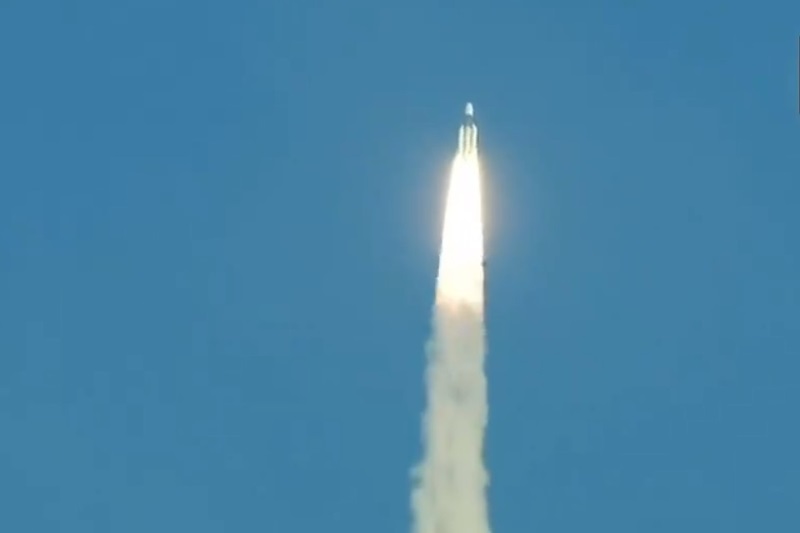- Sponsored -
ISRO’s communications satellite GSAT-29 launched; has ‘Geo-Eye’ to monitor India

Referred to as ‘Baahubali’, India’s heaviest rocket GSAT-29 is successfully launched from Sriharikota, India’s rocket port in Andhra Pradesh on the coast of the Bay of Bengal. The countdown had began at 2:50 pm on Tuesday and the rocket was launched at its scheduled time of 5.08pm today from the Satish Dhawan Space Centre.
- Sponsored -
Watch the launch video here:
#WATCH: Indian Space Research Organisation (ISRO) launches GSLV-MK-III D2 carrying GSAT-29 satellite from Satish Dhawan Space Centre in Sriharikota. #AndhraPradesh pic.twitter.com/7572xEzTq2
— ANI (@ANI) November 14, 2018
The sophisticated communications satellite GSAT-29 was hauled into the space today by ISRO’s Geosynchronous Satellite Launch Vehicle Mark III (GSLV Mk-III-D2) – on its second developmental flight.
#UPDATE: GSLV-MK-III D2 carrying GSAT-29 satellite, launches successfully from Satish Dhawan Space Centre in Sriharikota. #AndhraPradesh. #ISRO https://t.co/4nUURntBQ5
— ANI (@ANI) November 14, 2018
Apparently, this is the 67th launch from Sriharikota and the GSAT-29 is the 33rd communications satellite made by India.
According to reports, GSLV Mark III carries the country’s second high-throughput communication satellite GSAT-29 into its planned geostationary transfer orbit. Once the system is put in orbit, the satellite will be increasing hi-speed communication facilities in the remote areas of Jammu and Kashmir and the north-eastern states of the country as said ISRO chairman K Sivan.
Credit must go to Indian Space Research Organisation (ISRO) team. Let me congratulate entire team for this wonderful achievement: K Sivan, Chairman ISRO on successful launch of GSLV-MK-III D2 carrying GSAT-29 satellite from Satish Dhawan Space Centre in Sriharikota.#AndhraPradesh pic.twitter.com/u9wCNslmoI
— ANI (@ANI) November 14, 2018
It is the second test flight for the rocket GSLV Mark-III. Today’s launch success is crucial because it would prove its reliability for commercial launches in the future.
The satellite is also carrying a unique laser based optical communication, which ISRO is testing for the first time.
Even though it is the heaviest among India’s operational launch vehicles, it is also the shortest.
It took 15 years for ISRO to this rocket and each such launch would be cost Rs 300 crore or more.
Since the launch has been successful, the GSLV Mk-III will be declared operational.
The same class of rocket will be used for the forthcoming Chandrayaan-II mission in January next year. Beginning with the two solid strap-on motors on both the sides of the middle stage, this four-ton class vehicle comprises three stages.
While the middle stage uses liquid fuel, the upper one is a cryogenic engine. GSAT-29 is a multi-beam and high-throughput communication satellite. It will be carrying Ku and Ka band transponders.
However, it also has a few more systems, for experimenting with the evolving technologies in satellite science. It is to be noted that the mission life of the satellite is over ten years.
Also read: NASA: InSight spacecraft landing on Mars to be live streamed
- Sponsored -
